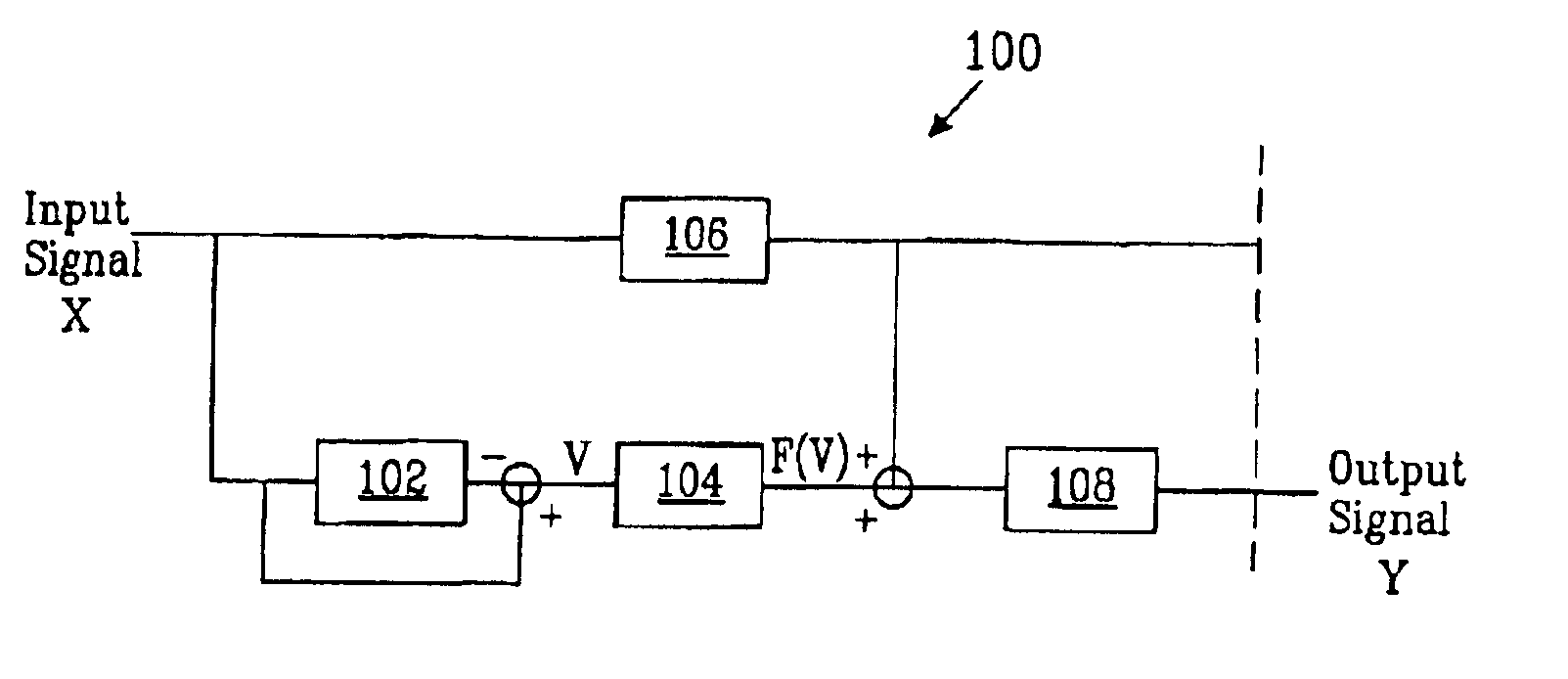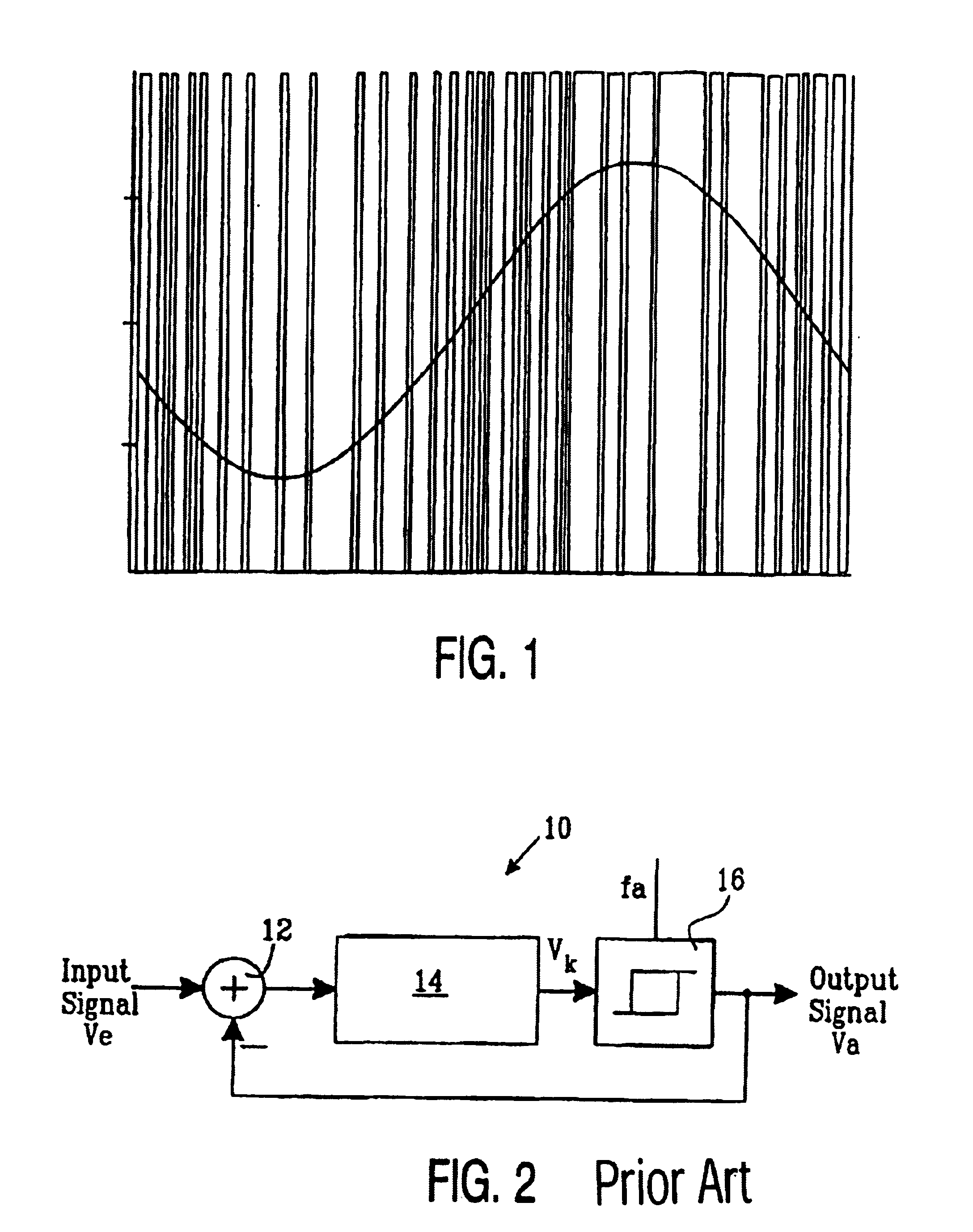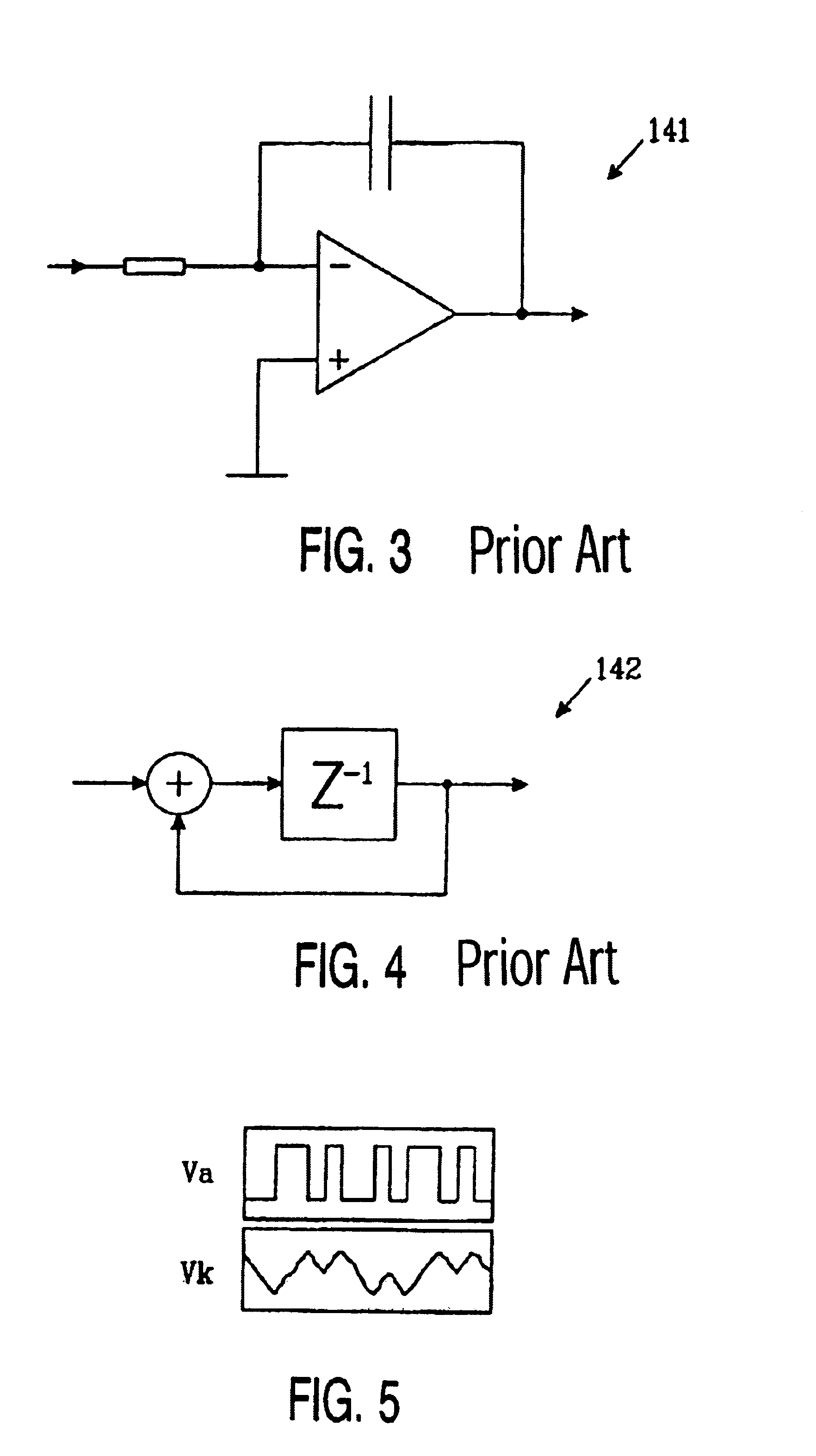Sigma-delta modulation
a technology of delta modulation and sigma-delta, applied in the field of delta modulation, can solve the problems of instability problems, conventional sdms themselves producing signal artifacts, etc., and achieve the effect of reducing phase shift errors
- Summary
- Abstract
- Description
- Claims
- Application Information
AI Technical Summary
Benefits of technology
Problems solved by technology
Method used
Image
Examples
Embodiment Construction
[0033]Embodiments of the present invention are directed to a sigma-delta modulating device wherein non-linearities are reduced. The embodiments are based on the following insight:
[0034]If a SDM is modelled as a non-linear element, with the following input-output (x→y) characteristic:
y=x+α3x3 (4)
when the input signal
V′=x−α3x3 (5)
is fed into the model, the result is an output signal y′; where
y′=V′+α3V′3=x−α3x3+α3 (x−α3x3)3=x+α32O(x5) (6)
In this way, the harmonic distortion generated by the SDM is significantly reduced. In practice, the number of distortion products in Eq. (4) is much larger, and the input signal can be adjusted accordingly to remove most of the distortion.
[0035]An exemplary sigma-delta modulating device 100, which accomplishes this model in the digital domain, is shown in FIG. 9. The sigma-delta modulating device 100 includes a first conventional SDM 102, a filter 104, a delay 106, and a second conventional SDM 108.
[0036]The input signal is passed through the SDM 1...
PUM
 Login to View More
Login to View More Abstract
Description
Claims
Application Information
 Login to View More
Login to View More - R&D
- Intellectual Property
- Life Sciences
- Materials
- Tech Scout
- Unparalleled Data Quality
- Higher Quality Content
- 60% Fewer Hallucinations
Browse by: Latest US Patents, China's latest patents, Technical Efficacy Thesaurus, Application Domain, Technology Topic, Popular Technical Reports.
© 2025 PatSnap. All rights reserved.Legal|Privacy policy|Modern Slavery Act Transparency Statement|Sitemap|About US| Contact US: help@patsnap.com



